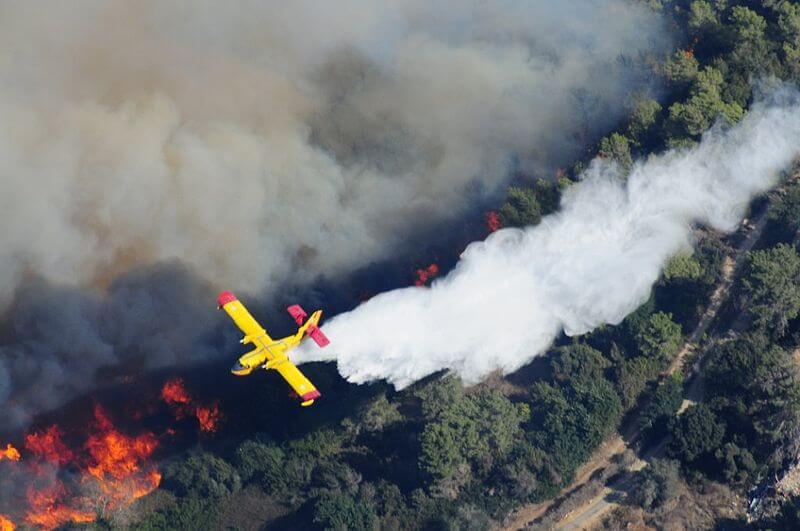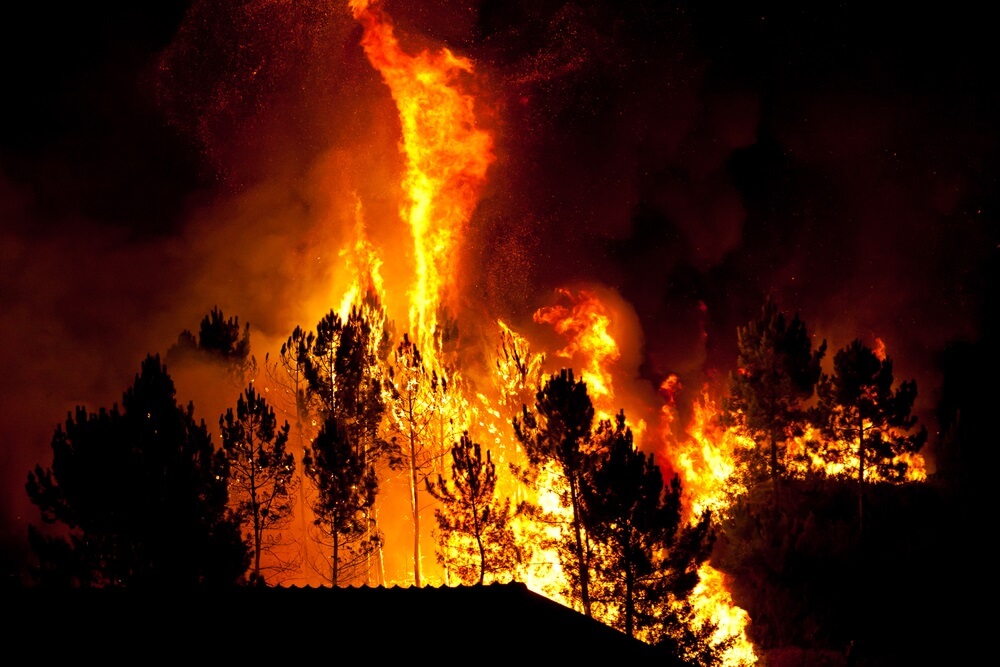The young pines that grow after the fire must be uprooted and thus give the local forest typical of our region a chance to renew its life as soon as possible

In honor of the summer that has arrived, the danger of fires in general and forest and forest fires in particular increases and intensifies.
Following the great fire in Carmel About a year and a half ago I wrote like many others about the need for proper management of forests in Israel in general and Carmel in particular. Among other things, the majority of experts were of the unanimous opinion that the pines should be thinned to allow the development of a spacious and open park forest in which Mediterranean trees and shrubs and not pines will dominate. It would be appropriate that the same policy be implemented in the forests around Jerusalem, that is, the thinning of pines and the cultivation of oaks, holly and Mediterranean vegetation, which is its natural habitat here.
I do not know to what extent the suggestions and instructions were implemented. I have a reasonable fear that in many places a dense pine forest ("match forest") grows and develops like the one that burned, and ignited the big fire. The thing that brings me back to dealing with the issue is an article published in: Environmental Defense Fund under the title "A surprising problem - more trees cause pollution". The article mentions Ronald Reagan's (former US President) saying that "trees cause more pollution than cars"...
It turns out that there is a hint of truth in the saying that originates from abysmal ignorance. The "wisdom" of course refers to the forests of North America and it turns out that without his knowledge and without his understanding, the saying contains a hint of a problematic situation created as a result of mismanagement.
As a result of a long-standing policy in which forest fires were extinguished, a situation arose in which "the forests in North America are loaded with billions of unnecessary trees". The policy caused a change in the nature of the forests, the situation in the past was subject to natural events or limited fires in areas where lightning caused a fire or Native Americans started a fire. Nature (and the natives) allowed the development of a forest where about 12 trees per acre grew.
This situation changed when in 1910 huge fires broke out, following which the federal government declared war on fires. The implementation of the war cost over two billion dollars each year. The result - today there are more than a hundred trees in each dunam, which means that an unnatural process of afforestation has been created, where many trees stand in a density that did not exist naturally. More trees give a more green landscape, seemingly better... but the reality is different.

The tops of the (dense) trees stop and absorb about 25% of the precipitation, which means less precipitation reaches the ground. Each tree draws about 60 liters of water, which, if not for the trees, would flow into streams and saturate additional habitats.
Helen Poulos, who conducted the survey, made a careful calculation according to which the conifer forest in Sierra Nevada that covers about 30,000 square kilometers causes a waste of about fifty million cubic meters every day. This amount supplies all of California's water needs for that day.
Dense trees cause temperature changes and chemical and biological changes of the area. Non-native trees cause overcrowding that prevents native trees from developing. Without the small fires that existed in the past, animals lose their habitat and food sources, day and night predators cannot navigate the dense forest. When a fire breaks out, the fire burns at a higher temperature, with a strong intensity and spreads very quickly.
The fires are more dangerous, the cost of extinguishing and the damages increase and intensify. Added to all this are the increasing amounts of pollutants that are emitted into the air: "a big fire is like burning coal in a power plant in the middle of the forest".
How to fix the situation? How to prevent "fuel" collected for decades from causing pollution and damage? Failure to do so will lead to huge fires that will endanger the environment and cause enormous damage, therefore the "unnecessary" trees must be removed from the forests by force. The diluted material has economic value and can be sold to various consumers. The author calculates the cost of the dilution against the cost of the amounts of water that will be added and suggests that the dilution be done by individuals and private entities who will receive payment.
The calculation of saving water is not valid for our arid environment, but there is no doubt that thinning forests and selling the thinned wood material would be a worthwhile "business" for all parties. The buyers of the diluted material will sell it for production and various uses. The thinning will allow fires to be controlled and it will also be possible to initiate small scale fires as needed. The thinning and initiated fires will give the local flora the possibility of regeneration and instead of "match forests" like pine trees create, Mediterranean groves will develop that allow for the existence of a wide biological diversity.
Even if a fire breaks out in these groves it will be easier to deal with it.
As I wrote, I don't know what the situation is in Carmel, but it is important to reiterate that the young pines that grow after the fire must be uprooted and thus give the local grove typical of our area a chance to renew its life as before.

3 תגובות
Hello Assaf, what you write is very interesting, although I am still not convinced of the correctness of the theory about the unnecessary trees.
One of the things that surprised me in the forests of the Umbria region in Italy is that there are almost no large trees there, and then I realized that it was due to the high density of the trees. Most of the big trees I know are man-planted trees, deliberately planted far apart, so they had the resources to grow. I don't know for sure if the dense trees in the forests of the region of Umbria (and other areas in Italy) developed there naturally or if there was human intervention, but the thought that formed in me at the time is that the natural state is a state of dense forests (because every seed that falls on the ground is allowed to grow) , while large trees exist only in very ancient forests or those planted by man.
The Israeli natural forest is also quite dense and most of the trees are not very large.
Also, if we look at the effect of the forest on the water resources that would have reached man, we distort the question of what is natural, by replacing it with "what is beneficial to man's interests".
So I'm not necessarily sure that the "match forests" are an unnatural process. Maybe in the US, but not as a rule.
In Israel the pine forests themselves are not natural, so there is no question at all whether the match forests after the fire are natural or not.
What do you think?
And what about carbon sequestration?
The trees store carbon inside them which if they didn't exist the carbon would be in the carbon dioxide compound.
And in general, as far as I know, there is a green plan to reforest the Sahara desert as a fight against climate change.
Interesting and thought-provoking.